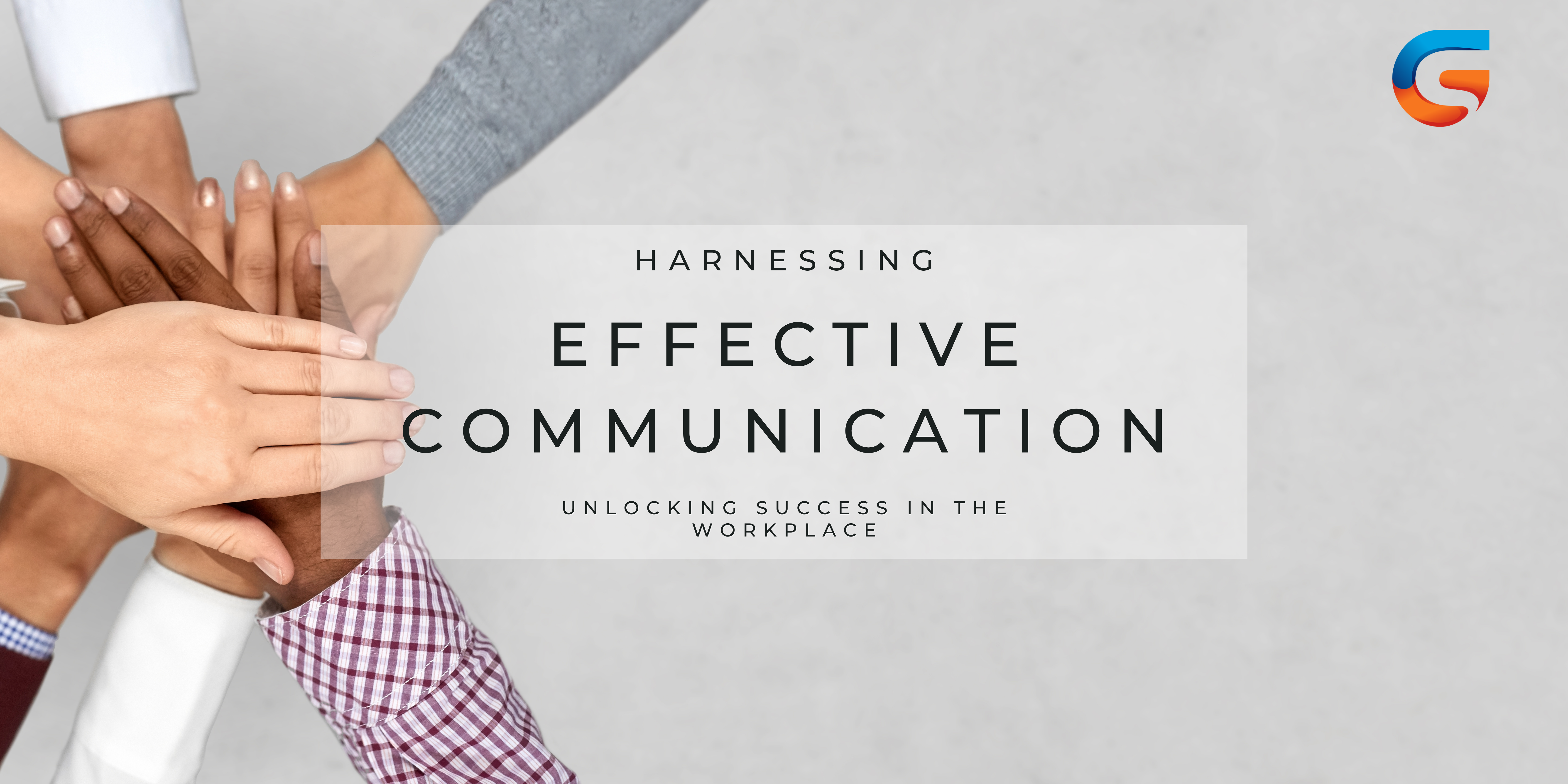Harnessing Effective Communication: Unlocking Success in the Workplace
In the spirit of Effective Communication Month, we take the opportunity to recognize the impact that effective communication has on workplace dynamics and success. Clear and efficient communication fosters understanding, collaboration, and productivity leading to a healthy progressive workplace and inclusive growth.
Mastering 1-on-1 Meetings:
One-on-one meetings provide an opportunity for focused and meaningful conversations between the manager and a team member. To maximize their effectiveness,
- Remind yourself that this is not a Performance Evaluation or a daily work meeting, focus on topics that are beyond daily tasks
- establish a comfortable environment where fluid dialogue can flourish without criticism
- Open communication including active listening is key;
- provide your undivided attention and encourage the other person to share their thoughts and concerns.
- Clearly define goals, establish action plans, and follow up on commitments made during these meetings.
Nurturing Written Communication:
Written communication, such as emails and memos, is an integral part of daily work interactions.
- enhance clarity and avoid misunderstandings, keep your messages concise, organized, and to the point.
- Clearly state your purpose and provide relevant context
- Always use a respectful and professional tone.
- Proofread your writing for grammar and spelling errors, and be mindful of cultural sensitivities. It is okay to leave an email that may carry critical information or a difficult message to sit for a while and reread it before you send.
Empowering Team Meetings:
Team meetings serve as a platform for collaboration and problem-solving.
- make these meetings effective, set clear objectives and expectations
- create an inclusive environment, encourage active participation, listen attentively, and facilitate constructive discussions.
- Ensure that action items and decisions are documented and shared with the team promptly to maintain accountability and transparency.
- Be mindful of your own and your team members’ time. Extend invitations to individuals whose presence will contribute to the conversation, whether in decision making or collaboration. If real-time input is not required from a team member, copy them on the minutes of the meeting. Similarly, you can always politely decline an invite and request for MOM if you feel your presence would not be contributive. This way everyone remains on the same page while increasing productivity.
- Be fully Present. Close tabs to avoid multitasking, silent your phones, turn them over so you’re not distracted by notifications and can focus your full attention to the topic at hand. According to research summarized by the American Psychological Association, shifting between tasks can cost you up to 40 percent of productive time. (https://www.apa.org/topics/research/multitasking)
- Body language speaks volumes. Use facial expressions or gestures to drive home your point. Utilize nods or thumbs up to connect with the host. These small changes can increase your ability to connect with our clients or team members and also help to reinforce trust and communicate more efficiently amongst each other.
Follow Virtual Meeting Protocols:
- Be prepared with right audio and video tools and especially the wi-fi
- Keep your camera on, remember a virtual meet is in lieu of an in person meet, not an alternative to a phone call
- Ensure you are presentable and appropriately dressed
- Create a neat and noise free space
- Stay focused and make efforts to minimize disruptions, if the doorbell rings, politely excuse yourself for the moment.
Engaging External Stakeholders and Clients:
Effective communication extends beyond internal interactions; it is crucial when engaging with external stakeholders and clients.
- Understand customer needs, concerns, and preferences
- Practice active listening and ask relevant open-ended questions.
- Be clear and transparent in your communication, manage expectations, and provide regular updates on project progress.
- Strive to build strong relationships based on trust, professionalism, and mutual respect.
Leverage Technology and Tools:
Leverage technology and communication tools to enhance efficiency and collaboration.
- Utilize project management systems and communication platforms like Slack, and video conferencing tools to facilitate seamless communication and ensure all team members stay connected, regardless of their physical location.
- Stay mindful; face-to-face interactions are invaluable and cannot replace digital communication; be attentive for non-verbal cues, if working remotely, remember our policy is that camera’s must be turned on during your interactions, exactly for this reason!
Seek Feedback and Adapt:
Effective communication requires continuous improvement.
- Constructive feedback can be vital to growth. Seek feedback from colleagues, managers, and team members to identify areas for growth.
- Take time to periodically reflect on your communication style and adapt it to suit different individuals and situations.
- Embrace a growth mindset and be open to learning and evolving your communication skills.
Effective communication serves as the cornerstone of a thriving workplace. By mastering 1-on-1 meetings, nurturing written communication, empowering team meetings, engaging external stakeholders and clients, leveraging technology, and seeking feedback, we can foster a culture of clarity, collaboration, and success. As we celebrate Effective Communication Month, let us commit to honing our communication skills to create stronger connections and achieve remarkable results.
If you are interested in partaking in a Communication Training, reach out to your manager or any member of the HR team for support.
For more information on this topic, we highly recommend reading the book, “Crucial Conversations” by Kerry Patterson, Joseph Grenny, Ron McMillan and Al Switze



